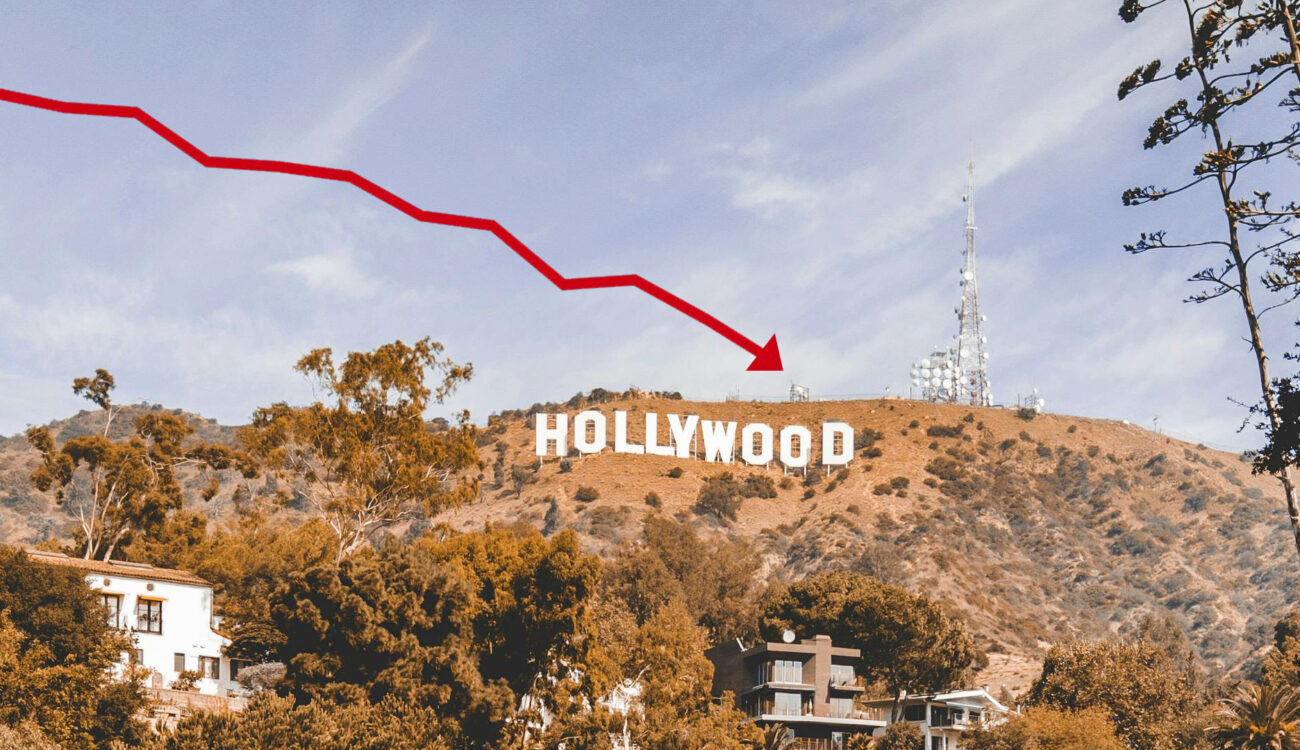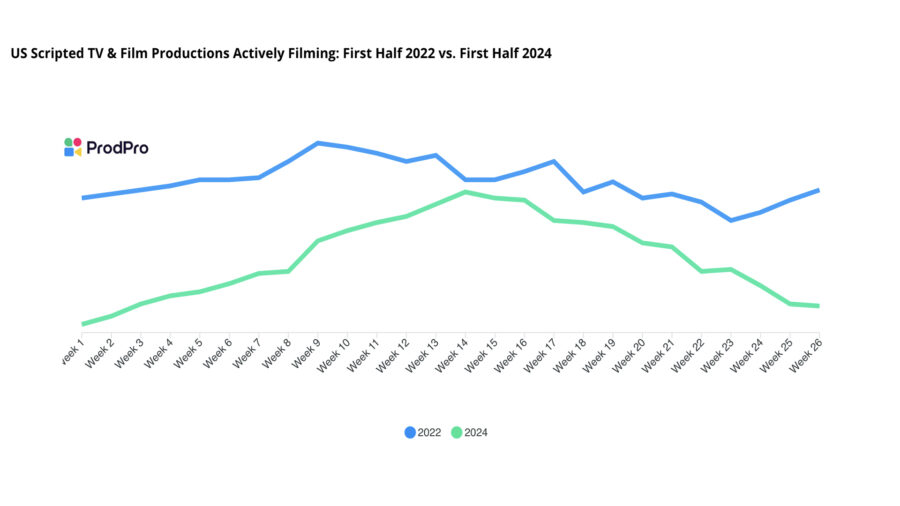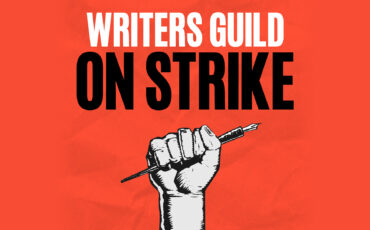
Anyone working in the film and television industry can tell you that finding work is getting difficult. Felt across all aspects of production, a lot of blame has been thrown around as to why exactly this is. Regardless of who is to blame, a ProdPro report featured in the Los Angeles Times breaks down analytics detailing the overall fall in production since 2022. Let’s take a look at why that might be.
COVID-19 and mergers
COVID took out the film and television industry at the knees. It was a blow that we still haven’t (and may never) fully recover from. Cinemas were closed, and physical production was impossible as the world recovered from a once-in-a-generation pandemic. Quite frankly, the world was not prepared.
While COVID certainly seems the catalyst, the system was already set up to fail in many ways. The Disney-Fox merger, which came to completion on March 20, 2019, was a wake-up call for many creatives working in the industry. Two major studios becoming one was already a huge blow to production, as there would now be fewer places to produce movies. And yes, 20th Century Fox still exists as 20th Century Studios now, but the amount of (for lack of a better word) “content” being produced still remains lower than pre-merger numbers. Disney is the overarching parent now, so if Disney doesn’t want it, 20th Century Studios ain’t making it.
The merger also set a precedent that Discovery-Warner Bros and Amazon-MGM would soon follow. Even fewer places to make movies. There’s even a deal in the works of Paramount-Skydance merging, with Sony Pictures sniffing around. So, fewer places to make movies means fewer movies to be made. And I’m sure there are those thinking that since those studios still exist, there shouldn’t be a drop-off in the movies and series that they produce. But keep in mind that those studios only exist as subsidiaries of their parent companies. So if Disney wants to produce something (like ‘Deadpool’) that doesn’t necessarily jive with the Disney brand, it gets released under the 20th Century banner. Same with Amazon releasing MGM movies, and so on.
Producing from the Front
A slow recovery
Although it ebbs and flows, production levels have never fully recovered in a post-COVID world. While 2022 saw a return to cinemas with ‘Top Gun: Maverick’ and ‘Avatar: The Way of Water,’ the industry continued to limp along. The proverbial explosion of ‘Barbie’ and ‘Oppenheimer’ invigorated the cinema industry again in 2023. Great stuff was being made, though audiences were not responding the way they used to. Box office profits seldom soar as they once did. People got used to watching movies in their homes on streaming so studios responded by releasing movies on Digital Video on Demand as short as a few weeks after they were released in cinemas.
I’m not blaming streaming services for anything here. But the simple fact is that while streaming giants such as Amazon, Netflix, and Apple were making more movies for cinemas, studios such as Disney, Paramount, Warner Bros, and Universal were creating their own streaming services and content. So, the priority was to bring their movies and series to digital under their own terms. This means, among other things, they can have shorter theatrical windows and bring their movies to their streaming platform as soon as they want while still making profits. And audiences have noticed. I have many friends who will simply wait for a movie to hit streaming rather than pay $20 a ticket to see it in theaters.
But this streaming model created another problem that would ultimately impact the industry in 2023…
Strikes, strikes, and (possibly) more strikes
The industry suffered a major blow during the strike period of the Writer’s Guild of America (May through September 2023) and the Screen Actors Guild (July through November 2023). Productions essentially ceased while the AMPTP negotiated to get things back up and running.
This year, the other largest film production union, IASTE (International Alliance of Theatrical Stage Employees) is renegotiating their contract. This means another strike is possible, although not likely. The LA Times reports that an agreement has been reached between IATSE and the AMPTP but has not yet been ratified as of the publication of this article. As the ProdPro report states, even the threat of a possible strike from IATSE “has made it more difficult for indie film producers to get bonded for production.”
A lot of muck was thrown regarding studios, writers, actors, etc., during the strikes of last year. But a lot of the tension was due to the increasing streaming platforms, and, quite frankly, corporate greed as to how to disperse funds to those who used to get residuals that the studios were now not wanting to share. Famously, Scarlett Johannson was unhappy about her residual pay when ‘Black Widow’ went to Disney+. And this was not an isolated incident, as both SAG and WGA had streaming residuals written into their new contracts which helped bring the strikes to a close.
Back to the present
So now that we’ve relived the trauma of the last few years let’s return to the present day and look at the information published by ProdPro. While numbers have generally been rising since 2023, going back another year, we are still down approximately 40% from 2022. Feature films have seen a decrease of 18% since last year, which was down 22% from 2022.

The Scriptnotes podcast’s May 2024 episode, ‘It’s Brutal Out Here,’ details how difficult it is to get new ideas produced. You can find it here. In fact, they frequently discuss the subject. I highly recommend the podcast to screenwriters or anyone interested in screenwriting. I love it and am a fan myself.
Instead of making one $200 million movie, try making 20 $10 million movies. Or 50 $4 million movies.
Cord Jefferson at the 2024 Academy Awards
The business of making movies
Finally, it’s worth mentioning that studios have become risk-averse about putting money into original content versus the plethora of remakes, reboots, sequels, adaptations, etc. After investing hundreds of millions of dollars in flops, it would seem that something needs to change. Making a movie is now less of a creative endeavor and more of a business transaction for the film studios.
I’ll leave you with the immortal words of Academy Award-winning screenwriter Cord Jefferson at the 2024 Oscars: “I understand that this is a risk-averse industry; I get it. But $200 million movies are also a risk. And it doesn’t always work out, but you take the risk anyway. Instead of making one $200 million movie, try making 20 $10 million movies. Or 50 $4 million movies.”
So, what do you think needs to change? Studios are spending more money, so are they justified in producing fewer films and TV series? Leave your comments below!

































